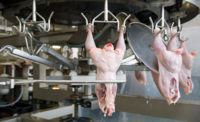TECH FLASH
Americans eat more from home, but cook less
The top 10 foods that increased in American diets over the past decade are simple and easy to prepare

More Americans are skipping out on restaurant visits these days and sourcing more meals from home, but this doesn’t necessarily mean they are doing the cooking themselves.
Instead, according to the recent NPD Group study, “29th Annual Eating Patterns in America,” food manufacturers are filling more of the cooking needs as consumers turn toward easily prepared or ready-to-eat foods.
Americans are eating more meals from home than they have in years, the report acknowledges. In fact, according to NPD, the decline in restaurant usage and an increase in meals from home is one of the “single biggest changes in eating patterns in Americans in the last five years.”
Though history shows Americans love eating out, the number of meals sourced from restaurants by consumers has dropped since the recession. According to NPD’s research, Americans purchased 191 meals per person for the year ending August 2014, representing the slowest pace of eating out since 1993 and a number that indicates Americans now get eight out of 10 meals from home.
“We are eating more meals in our homes, but not cooking more dishes,” says Harry Balzer, vice president of NPD. “You can see how Americans are making their lives easier, despite the economic limits, by looking at the foods and beverages that have become a part of more American diets.”
Balzer says when measuring the foods of the decade, it’s not trending items like hummus, quinoa, kale or sriracha that make the list, but those that have increased the most in American diets—and most require little to no preparation.
According to NPD’s research, the 10 foods and beverages that increased the most in American diets include: yogurt, bottled water, pizza, poultry sandwiches, Mexican food, fresh fruit, bars, frozen sandwiches, chips and pancakes.
The study chose foods with the highest percentage of change in the number of Americans consuming them at least once every two weeks. Yogurt grew the most at 12.5 percent, while pancakes rounded out the top 10 with a 5.8 percent increase.
“What’s the real preparation to consume these 10 items … a spoon for the yogurt and maybe a fork and knife for the pancakes,” Balzer says. “We are still leaving the cooking to others. With restaurant visits down, the manufacturers of our foods are filling more of that need.”
Looking for a reprint of this article?
From high-res PDFs to custom plaques, order your copy today!







